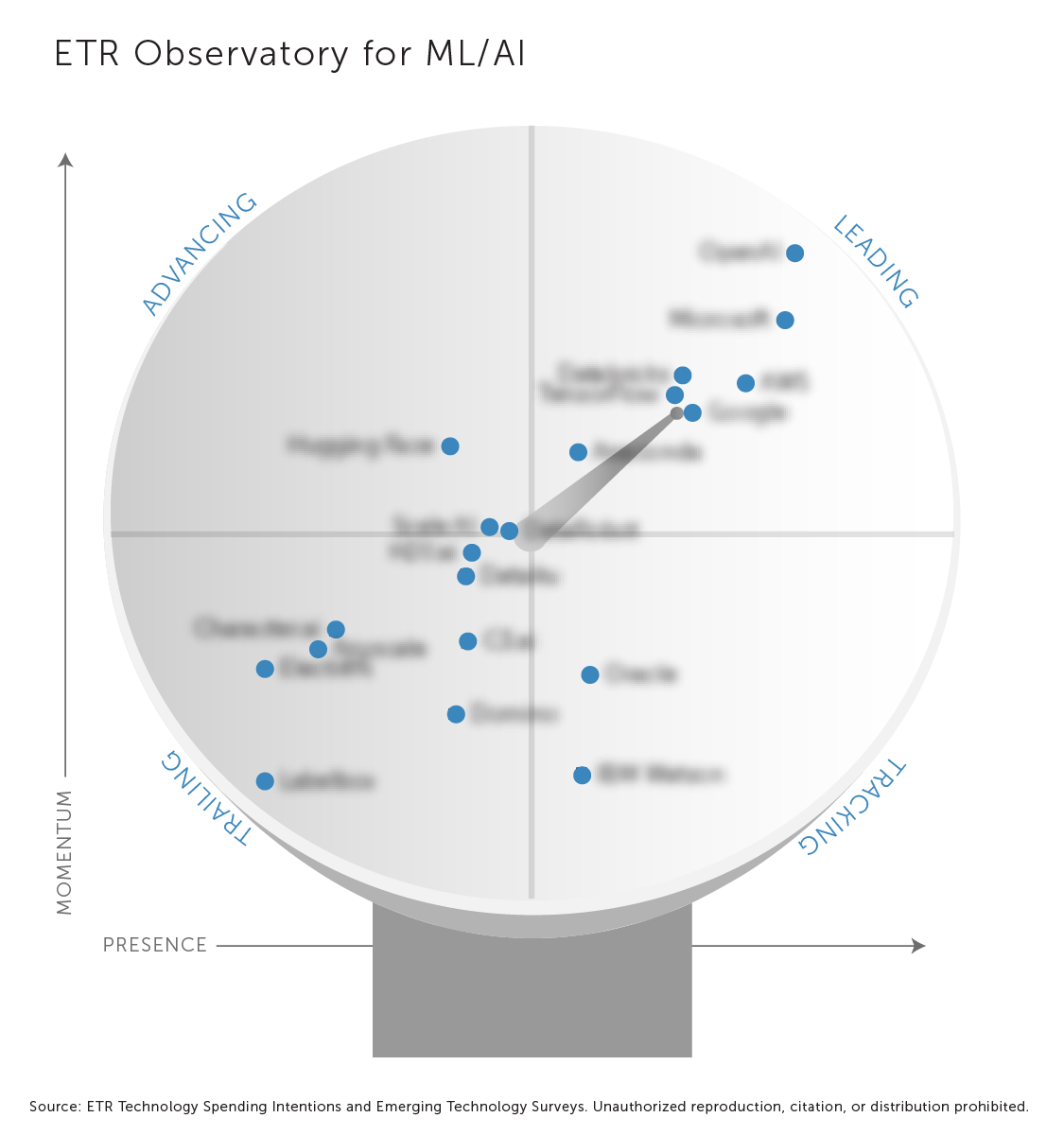Unlike other industry reports that are based on analyst opinion, the ETR Observatory follows a proprietary data methodology to assess IT decision-maker (ITDM) usage of a vendor’s product and services within a specific subsector. Read a brief excerpt from the report below, and then click through to access our second Observatory on the ML/AI market for free!
ETR Observatory on ML/AI
Maturity, Scale, and Speed Driving Leading ML/AI Vendors
The ML/AI sector today tracks vendors targeting organizations in the full spectrum of maturity with regard to data science programs. Organizations with more mature programs largely built data science teams that embraced a variety of tools, most certainly open-source programming languages like R and Python and open-source tools like Jupyter Notebook and TensorFlow. But as programs evolve, reproducibility and reuse of ML models become important, as well as all of the governance and data integration activities and monitoring that are part of end-to-end MLOps frameworks. Organizations that have more recently begun their data science journeys may leap-frog these phases given a variety of turnkey, business user-friendly solutions from today’s vendors focused on “democratizing” data science. No matter the stage of maturity, however, there is no denying the impact of generative AI’s recent emergence in the zeitgeist with OpenAI’s popular ChatGPT tool. It seems most organizations are now at least exploring possible use cases for ML/AI, and vendors in a variety of sectors – from security to RPA to enterprise applications – are weaving AI capabilities into their core product offerings.

The ML/AI market reflects this diversity of maturity and use cases, with classes of vendors that speak to the needs of different organizations. Large public cloud platforms like Microsoft, AWS, and Google offer full MLOps capabilities for enterprise-scale data science programs, competing alongside other popular end-to-end offerings like Oracle, IBM Watson, and Domino and open-source packages like TensorFlow and Anaconda. Another class of tools aims to simplify the complexity of data science work by offering business-user-friendly products like pre-trained ML models to speed time to business value, such as DataRobot, C3.ai, H2O.ai, ElectrifAi, and Hugging Face. Still, others have broadened their appeal as ML/AI platforms by focusing earlier in the data and analytics pipeline, such as Databricks with its popular data lakehouse paradigm for data management or Dataiku with its finesse as a data preparation tool. And a final class of ML/AI vendors occupy niche use cases and specializations, such as Anyscale’s excellence in scalability, Labelbox’s specialty for labeling multimedia data for ML model training, or Character.ai’s inventive capabilities for creating personas for conversational AI and chatbots. Across these many ML/AI vendors, we see varying levels of spending intention and utilization across enterprises, with the more robust MLOps offerings occupying the leading positions and niche applications trailing.
This report focuses on ML/AI tools and includes the following vendors: Anaconda | Anyscale | Amazon (SageMaker) | C3.ai | Character.ai | Databricks | Dataiku | DataRobot | Domino | ElectrifAi | Google (Vertex AI) | H2O.ai | Hugging Face | IBM Watson | Labelbox | Microsoft (Azure Machine Learning) | OpenAI | Oracle | Scale AI | TensorFlow
Access the full ML/AI Observability report for a much more detailed, data-driven analysis.